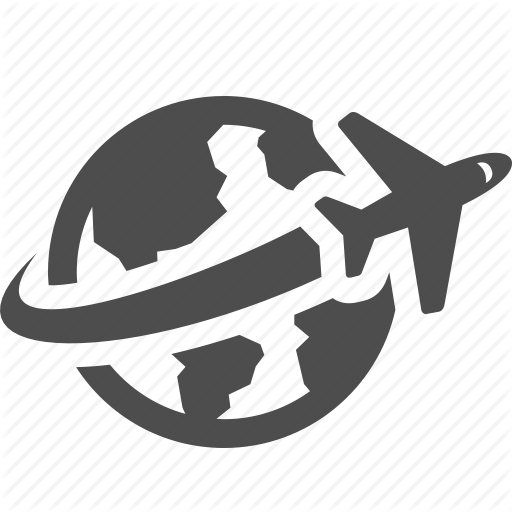
No matter how much you pay for your seat, how much is your leg room or whether you’re flying first class or not, the one and only thing that many air travelers have in common is ear pain. While most ear discomfort on a flight travel is nothing more than an annoyance, what happens if it becomes more serious? Ear pain and pressure can lead to severe pain and in rare cases, hearing loss. So it’s wise to take precautions before, during and also after your flight.
There is one thing that many air travellers have in common: ear discomfort. Whether they’re flying first class or coach, they all suffer from it. There is no such thing as a safe level of ear pressure, popping, or severe pain. Even though most cases of aeroplane ear pain are minor irritations, what happens when it gets worse?
During a flight, your eardrum is subjected to a lot of stress because of the imbalance between the air pressure in your middle ear and the air pressure outside. At take-off or landing you may notice your ears perk up and down, which is known as “aero-ear.”
In most cases, self-care measures such as yawns, swallows, and chewing gum can help alleviate the symptoms of aeroplane ear. However, if you have a severe case of aeroplane ear, you should probably see a doctor for further evaluation.
Causes of Ear Pain on Flight Travel
The joy of flying is often accompanied with ear discomfort. Popularly called the ‘airplane ear’, it’s felt as prickling of the ears with slight pain. It usually happens during landing; precisely, after the pilot announces that the airplane has begun its descent. As the plane starts to land, the changes in air pressure pushes your eardrums in resulting in pain. Most of the times, you feel that your ears are blocked. While the ear tubes try to adapt to the change in atmospheric pressure, this odd sensation in the ears might become more painful for a few travelers.

A condition known as “aeroplane ear” occurs when your eardrum (tympanic membrane) does not vibrate normally because the air pressure in your middle ear and the air pressure outside of your body do not match and which causes pain in ear. The eustachian tube, a small passage that connects the middle ear to the eardrum, regulates air pressure. At high altitude, the pressure in the atmosphere changes rapidly. The symptoms of aeroplane ear are caused by a faulty eustachian tube. Eustachian tube egress opens, allowing more air to enter the middle ear, resulting in a more even distribution of air pressure in the ear canal.
You will get following symptoms of airplane ear:
- Blocked ear
- You will get Discomfort or pain deep inside the ears.
- Inaudible sounds
With descent (landing), symptoms are more common, but are usually gone after the plane lands.
When to see doctor if pain persist?
Call your doctor if any of these signs or symptoms persists for more than a few days or if they are severe.
Quick Remedies for Relief from Earn Pain
Simply waiting for that ear discomfort to fade out will certainly not work wonders. So, here are some safe and natural methods that will quickly give you a sigh of relief.
1. Sucking on Candy or Chew gum
 It’s the sweetest remedy that really works! Even if you don’t have a sweet tooth, pick some candies offered by the cabin crew before takeoff and landing. Chewing and sucking candies enables continuous movement of the jaws. It allows the air pressure in your ear to balance out by opening the Eustachian tubes.
It’s the sweetest remedy that really works! Even if you don’t have a sweet tooth, pick some candies offered by the cabin crew before takeoff and landing. Chewing and sucking candies enables continuous movement of the jaws. It allows the air pressure in your ear to balance out by opening the Eustachian tubes.
Ever wondered why the cabin crew passes out sweets before takeoff and landing? Sucking on hard candy or chewing gum enables you to swallow frequently. Chewing enables continuous movement of the jaws and releases tension caused by pressure build up. It allows the air pressure in your ear to balance out by opening the Eustachian tube. Pressure, particularly during takeoff and just before the plane begins its descent, during the flight.
2. When ascending or descending, perform the Valsalva manoeuvre.
This breathing technique may sound complicated, but it’s much simple and easy to do! Take a deep breath first; then close your mouth and pinch your nose. While the mouth is closed, try to blow air gently through the nostrils till you hear a popping sound. The maneuver equalizes the air pressure in your ears. However, if you have severe cold or you’re prone to allergies, avoid the Valsalva as it may lead to severe ear infection.
3. The Toynbee Maneuver
Another ear-popping method to relieve ear pain! Much alike the Valsalva, it is an effective ear-clearing technique that you can do right in your seat. The Toynbee technique involves pinching your nose gently, sipping on some water and swallowing it hard simultaneously. For better results, repeat both the maneuvers back to back till your ears are clear.
4. Yawning

Yawning needs no rocket science. Even if you’re not sleepy try to yawn as much as you can! The wide stretching of the mouth makes the muscles active causing opening and closing of the Eustachian tubes. This balances the air pressure outside. Repeat every few minutes until your ears pop.
5. Pop your ears
You must have tried this child’s play, years back. Time to regain! Pinch your nose closing it with your fingers and then blow through your nose until you feel your ears ‘pop’. Popping ears are effective in opening the ear tubes and regulating the air pressure in the ears.
6. Nasal Spray and Decongestant
Another quick relief is to use nasal spray, just an hour prior to landing and only as-needed. It will offset any swelling that might arise in the nose, hindering the air flow in the Eustachian tubes. Do not overuse nasal sprays as this may cause more congestion. Though decongestant is not a complete cure, it’s certainly an immediate relief before landing.
7. Try to filtered your earplugs
During ascents and descents, these earplugs gradually equalise the pressure on your eardrum. Buying these can be done at a hearing clinic, an airport gift shop, or a drugstore. You’ll still have to yawn and swallow to get the pressure off your teeth.
8. Try to avoid sleep during Landings and takeoffs:
Self-care techniques can be performed when pressure in your ears is felt, as long as you’re awake during ascents and descents.
9.Take allergic Medication
Allergy sufferers should take their medication at least an hour before takeoff to avoid a reaction.
10.Try to rethink about your travel Plan
It is best to avoid flying when you are sick with a virus like the common cold and other respiratory illnesses. Ask your doctor when it’s safe to travel after a recent ear surgery.
Tips to Prevent Ear Pain during air travel
As the ancient saying relates, prevention is better than cure! Below given are some expert tips that you can follow to avoid that painful episode of plugged ears.
1. Wake up an hour before landing
It’s common for people to believe that sleeping during take-offs and landings will alleviate the pain, but it is better to stay awake and practise these above-mentioned techniques so that you don’t wake up in the middle of the flight with excruciating ear pain.
2. Opt for over-ear headphones
In-ear or bud headphones may tempt you to listen to your favourite tunes on the plane, but they can worsen earwax buildup. When in-ear headphones are worn all the time, they can act as a’stopper,’ preventing earwax from naturally dissolving. Constricted airways make it more difficult for the body to balance itself.
3. Suck on a boiled sweet
To address this issue, some airlines hand out candies to passengers before takeoff. Wait until the plane is in the air before savouring those scrumptious snacks.
4 Make sure you’re well enough to fly.
Any infection of the ears, nose, or sinuses should be avoided when flying. An eardrum can be punctured by the swelled ear canal. Your doctor or pharmacist can provide you with information about decongestants, which can be used to reduce ear swelling. If you’ve recently undergone ear surgery, you should check with your doctor before flying.
Is it possible to avoid airplane ear?
Takeoff and landing are the most dangerous times for aeroplane ear, so it’s best to stay awake during these periods. Eustachian tubes can be kept open by chewing gum, eating, or drinking during these times.
Who are mostly at risk when travelling on Plane of developing ear pain?
Anyone who travels by plane is susceptible to developing aeroplane ear. These people (especially children) may have more severe symptoms if their Eustachian tubes are very narrow or small. When flying, anyone who’s previously had an infection or rupture in their eardrum is more susceptible to ear problems.

